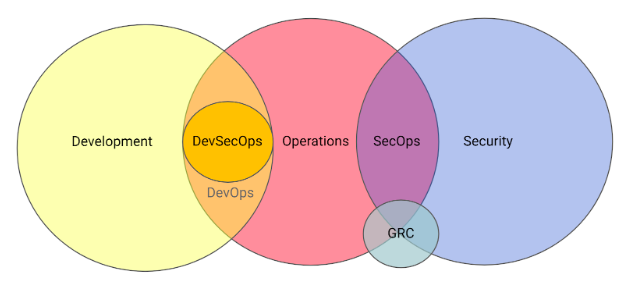
SecOps (short for “security + operations”) refers to the collaboration between operations and IT security in an effort to automate security and operations tasks.
Traditionally, security and IT departments have worked in silos.
SecOps is gaining traction in the enterprise space as a way to improve collaboration between these critical departments.
This is especially important considering that a recent survey found that more than 50% of organizations sacrifice cybersecurity for speed.
COVID-19 made cybersecurity even more important, considering that over 80% of organizations made changes implemented during the pandemic increased their risk and threat exposure.
This explains why 85% of enterprise organizations say that SecOps initiatives are part of their future strategy.
Table of Contents
Best Software in SecOps
#1 ServiceNow
ServiceNow is a cloud-based platform that helps businesses automate their operations. One of its key features is the ability to integrate with other systems, which makes it ideal for SecOps.
ServiceNow also offers a variety of security-related features, such as vulnerability management and incident response.
Introduction to Security Operations (SecOps) in ServiceNow
#2 Splunk
Splunk is a software platform that helps organizations collect and analyze data. It can be used for a variety of purposes, including security monitoring and incident response.
Splunk’s main advantage is its flexibility – it can be used for both small and large organizations, and it can be customized to fit each organization’s specific needs.
#3 Puppet
Puppet is a configuration management tool that helps organizations automate their IT infrastructure. It can be used for tasks such as provisioning, patching, and compliance.
Puppet’s main advantage is its ease of use – it doesn’t require a lot of technical expertise to get started, and it has a large community of users who can offer support.
#4 Chef
Chef helps organizations automate their IT infrastructure. It can be used for tasks such as provisioning,patching, and compliance.
Chef is a tool for configuration management. It helps you manage your server configurations and keep them consistent across your infrastructure.
With Chef, you can write recipes that describe the desired state of your servers. These recipes are then used to provision and configure new servers, or to update existing ones.
Chef is designed to be scalable and extensible, so it can be used in small environments with a few servers, or in large datacenters with thousands of servers.
#5 Ansible
Ansible is a newer configuration management tool that is gaining popularity. It is designed to be simple to use, and it can be used for tasks such as provisioning, configuration management, application deployment, and orchestration.
Ansible is agentless, which means that it does not require any additional software to be installed on your servers.
Ansible is also idempotent, which means that you can run the same task multiple times without changing the state of your system.
Finally, Ansible is designed to be easily extendable with custom modules and plugins.
#6 SCCM
SCCM is a systems management tool from Microsoft. It can be used for tasks such as patch management, software deployment, and asset management.
SCCM is a comprehensive tool that offers a lot of features and capabilities. However, it can be complex to use, and it requires a certain level of technical expertise.
#7 SolarWinds
SolarWinds is a network management tool that helps organizations monitor and troubleshoot their networks. It can be used for tasks such as network performance monitoring, event log collection, and syslog analysis.
SolarWinds has a wide range of features and capabilities. However, it can be complex to use, and it requires a certain level of technical expertise.
In conclusion, there are a variety of SecOps tools available, and the best tool for you will depend on your specific needs and requirements. ServiceNow, Splunk, Puppet, Chef, Ansible, SCCM, and SolarWinds are all popular choices.
What’s Next for SecOps
SecOps is part of the SOC Goes Mainstream trend.
SOC (security operation center) is an organization’s dedicated cybersecurity hub.
Studies show that 47% of traditional IT departments are not prepared to deal with cyberattacks.
Many companies have experienced this weakness firsthand as cyberattacks have become much more frequent (Accenture estimates that the number of cyberattacks increased by 125% in 2021).
SOCs are growing in popularity as they work closely with major departments in the organization, which allows them to identify and deal with threats faster.
Fastest Two Minutes in SecOps: Cloud Security
Goals of SecOps
The goal of SecOps is to automate and improve communication between security and IT operations.
This collaboration can help speed up the process of identifying and addressing potential security threats.
Some of the benefits of SecOps include:
- Improved detection of potential security threats
- Faster response to security incidents
- Reduced downtime in the event of a security incident
- Improved compliance with security regulations
- Reduced costs associated with security breaches
- Despite these benefits, there are some challenges that need to be addressed in order for SecOps to be successful.
Some of these challenges include:
- Lack of communication and collaboration between security and IT teams
- Different priorities and objectives between security and IT teams
- Lack of standardization among tools and processes used by security and IT teams
- Siloed data that is difficult to share between security and IT teams
Despite these challenges, SecOps is becoming more popular as organizations look for ways to improve their cybersecurity posture.
Basic components of SecOps
In order to be successful, SecOps must include the following components:
- A shared security and operations roadmap
- Integrated security and operations tools
- Automated security and operations processes
- A common language and understanding between security and operations teams
- Continuous feedback loop between security and operations teams
If these components are in place, organizations can expect to see improved communication and collaboration between security and IT teams.
What does a SecOps center do?
A SecOps center is responsible for the following tasks:
- Monitoring security threats and incidents
- Identifying potential security risks
- Coordinating the response to security incidents
- Developing and implementing security policies and procedures
- Training employees on security awareness
- Conducting regular audits of security systems
A SecOps center can help organizations improve their cybersecurity posture by providing a centralized location for monitoring and responding to security threats.
Why is SecOps important?
SecOps is important because it can help organizations improve their cybersecurity posture.
This is especially important in today’s environment, where cyberattacks are becoming more frequent and sophisticated.
Organizations that implement SecOps can expect to see improved communication and collaboration between security and IT teams.
This can lead to faster detection and response to potential security threats. Additionally, SecOps can help organizations improve their compliance with security regulations.
SecOps vs. SOC
While SecOps and SOC share many similarities, there are some key differences between the two.
SecOps is more focused on automation and collaboration between security and IT departments, while SOCs are more dedicated to detection and response to threats.
SOCs also tend to be more proactive in their approach to cybersecurity, while SecOps is more reactive.
It’s important to note that SOCs can’t function without SecOps, and vice versa. The two concepts are closely intertwined, and both are essential for an organization’s cybersecurity strategy.
Fastest Two Minutes in SecOps: Top SOC Challenges
SecOps vs. DevSecOps
While SecOps and DevSecOps share many similarities, there are some key differences between the two.
DevSecOps is more focused on the integration of security into the software development process, while SecOps is more focused on the collaboration between security and IT departments.
DevSecOps also places a greater emphasis on automation than SecOps.
It’s important to note that DevSecOps can’t function without SecOps, and vice versa. The two concepts are closely intertwined, and both are essential for an organization’s cybersecurity strategy.
How Can You Implement SecOps?
If you’re interested in implementing a SecOps strategy, there are a few things you need to keep in mind.
First, you need to ensure that you have the right tools and processes in place. This includes both security and IT tools, as well as automation capabilities.
Second, you need to foster a culture of collaboration between security and IT teams. This can be done by promoting communication and sharing best practices.
Finally, you need to make sure that your SecOps strategy is continually evolving. As the cybersecurity landscape changes, so too should your SecOps strategy.
Implementing a SecOps strategy can help organizations improve their cybersecurity posture. By promoting collaboration between security and IT teams, Organizations can improve their detection and response to potential security threats.
Cybersecurity threats are constantly evolving, which means that organizations need to be constantly evolving their cybersecurity strategies. One way to do this is by implementing a SecOps strategy.
SecOps is a collaborative approach to security that emphasizes communication and automation.
When implemented correctly, SecOps can help organizations improve their detection and response to potential security threats. Additionally, SecOps can help organizations improve their compliance with security regulations.
The future of SecOps
The future of SecOps is likely to see more automation and artificial intelligence being used to help security teams.
Additionally, we can expect to see more organizations implementing a DevSecOps approach, which emphasizes the integration of security into the software development process.
As cyberattacks become more sophisticated, it’s important for organizations to continuously evolve their cybersecurity strategies.
SecOps is one way to do this, and we can expect to see more organizations implementing a SecOps approach in the future.
What Is SecOps | SecOps Tutorial For Beginners | DevOps Training | Edureka
SecOps – FAQs
What is SecOps?
SecOps is a collaborative approach to security that emphasizes communication and automation.
What are the benefits of SecOps?
SecOps can help organizations improve their detection and response to potential security threats.
Additionally, SecOps can help organizations improve their compliance with security regulations.
How can I implement SecOps?
There are a few things you need to keep in mind when implementing SecOps:
First, you need to ensure that you have the right tools and processes in place. This includes both security and IT tools, as well as automation capabilities.
Second, you need to foster a culture of collaboration between security and IT teams. This can be done by promoting communication and sharing best practices.
Finally, you need to make sure that your SecOps strategy is continually evolving. As the cybersecurity landscape changes, so too should your SecOps strategy.
What is the future of SecOps?
The future of SecOps is likely to see more automation and artificial intelligence being used to help security teams.
Additionally, we can expect to see more organizations implementing a DevSecOps approach, which emphasizes the integration of security into the software development process.
Summary – SecOps
SecOps is a collaborative approach to security that emphasizes communication and automation.
By promoting collaboration between security and IT teams, Organizations can improve their detection and response to potential security threats.
Additionally, SecOps can help organizations improve their compliance with security regulations.


![Backwards 3: How to Type "Ɛ" [EASY]](https://softwareblade.com/wp-content/uploads/2022/02/Screen-Shot-2022-02-19-at-9.03.25-PM-150x150.png)